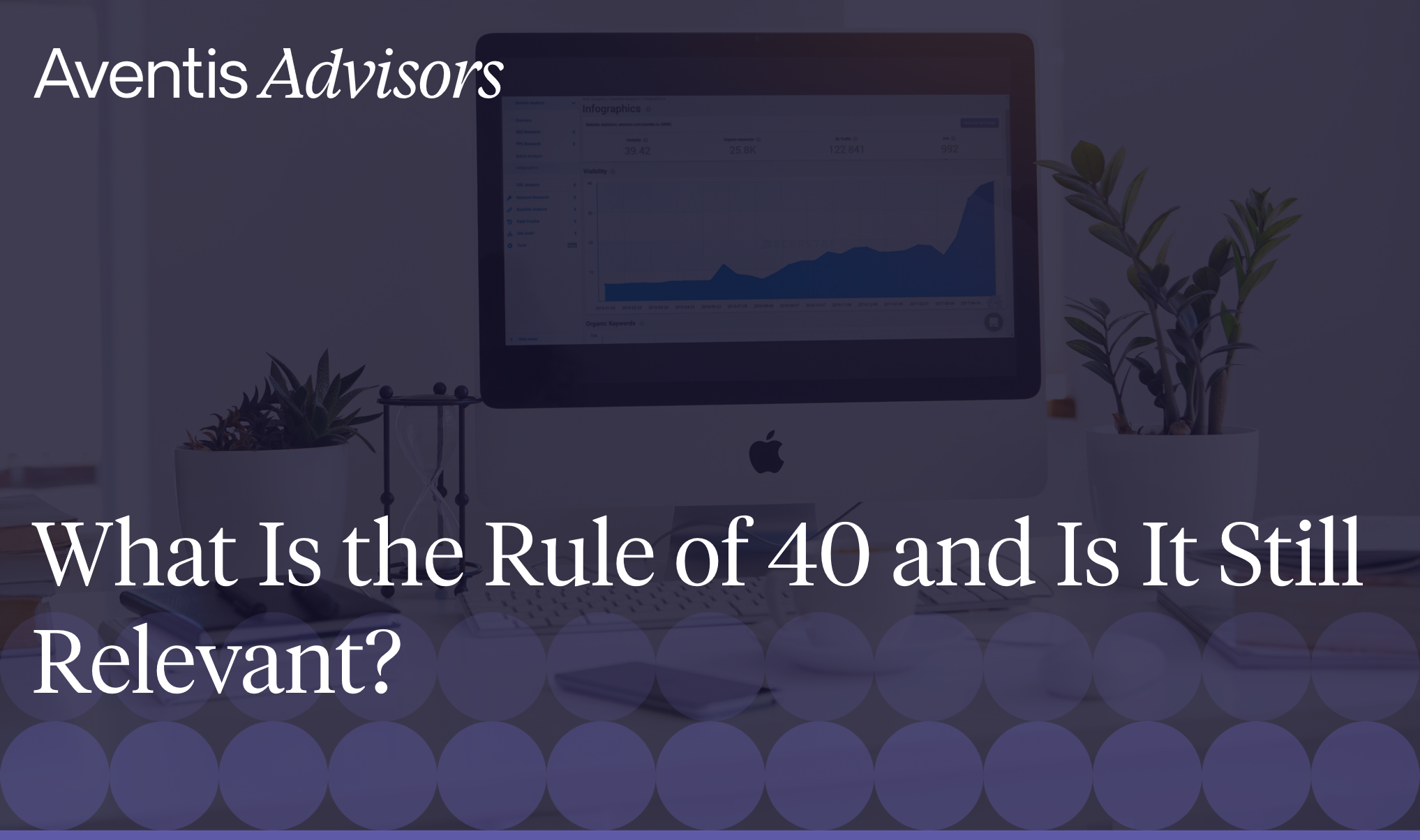In today’s ever-changing technology environment, the term “tech” has become something of a buzzword, eagerly embraced by companies of all shapes and sizes. There is a vast universe of both tech companies, as well as tech investors.
But behind this word, there are many different types of business models, each with a unique set of opportunities and challenges. Recent examples, such as WeWork, have shown that not all the “tech” companies are created equal, and picking a right valuation could be beneficial for both investors and founders.
In most cases, the valuations in the industry are done using multiples: be it of revenue or of EBITDA. But the foundational step is picking the right “multiple” and applying it right. This choice, however simple it may sound, is crucial in determining the accuracy of the valuation process.
However, figuring out how valuable a tech company is isn’t just about doing math. It’s about looking at the whole picture. This means really getting into what the company does, how it makes money, where it stands in the market, and how it might grow. For example, comparing enterprise software companies to online ecommerce stores can be highly misleading, although both can be labeled “tech companies”.
In this blogpost, we look at the three most common segments of the tech industry: software, IT services in hardware, and analyze what are the most common valuation multiples used, as well as what are the median multiples values across these sectors.
Steps in multiples valuation
To accurately capture a tech company’s value, two pivotal steps stand out. The first is to select the most appropriate valuation tool or multiple. There’s a wide number of valuation multiples available (revenue multiple, EBITDA multiple, cash flow multiples, price-to-earnings, etc.), each with its merits and drawbacks, tailored to different types of businesses and stages of growth. Making an informed choice of valuation methods here ensures that the valuation rests on a solid foundation.
The next big step is making fair comparisons. After you’ve got your numbers using your chosen tool, it’s time to match the company against others in the same space. Looking for tech companies with similar business models facing the same challenges and at similar growth stages. This helps make sure the valuation reflects the industry landscape.
When it comes to tech valuations understanding a company’s core business is just as important as the financials. Both the business side and the numbers work together to get an accurate valuation. While there exist a number of other valuation methods, such as discounted cash flow (DCF, assets valuation), here we look at the valuation multiple method.
In this article, we look at the most common technology segments, answering the following questions:
- What are the most common valuation multiples used
- How comparable companies are valued on public markets and in M&A transactions
Tech companies segments:
- Software companies (SaaS, on-premise, components)
- IT services and consulting
- Hardware
- Artificial Intelligence (AI)
Software
Valuation multiples used in the software industry
Topping the list of commonly used multiples for software companies is the Enterprise Value-to-Revenue (EV/Revenue) ratio. Since many software companies prioritize growth over immediate profitability, especially those in their early stages, revenue becomes a central indicator of their performance and potential. Revenue multiples provide an understanding of how the market values every dollar of the company’s sales.
Following closely behind is the Enterprise Value-to-EBITDA (EV/EBITDA) multiple. EBITDA offers a clearer picture of a company’s operational profitability, stripping away the impacts of financing decisions, tax environments, and non-cash expenses. This metric is particularly helpful in comparing the value of mature software companies that have reached profitability, making it the second most popular multiple for valuation in the software sector.
For listed entities, multiples such as Price-to-Earnings (P/E) or Price-to-Cash-Flow (P/CF) are also commonly used, which allow an easier calculation based on the company market capitalization, net income and cash flow. As software companies rarely have significant levels of debt, those multiples can sometimes be applied to private companies as well.
Typical software valuations
Product software companies specialize in developing and maintaining their own software products. They invest heavily in research and development to create own intellectual property, generating revenue through product sales, licensing, and subscriptions.
Over the past years, valuation multiples for public software companies have been volatile, often rising significantly and then plummeting. However, these public company comparisons aren’t representative for many private software firms. Our study conducted from 2015-2023 found that the median software company was acquired at 16.8x EBITDA and 3.3x Revenue. Interestingly, these valuations peaked in 2021, reaching 6.0x Revenue before reverting towards the long-term average.

Valuations were also influenced by factors such as company size and geographical registration. For instance, US-registered software companies commanded higher valuations, with a median of 4.3x Revenue or 21.8x EBITDA, while companies from non-English speaking countries often had lower valuations when acquired.
Company size is one of the most important factors determining the valuation multiples. Larger companies generally command higher multiples. There are two major explanations for this. First, larger companies are less risky, often with professional management, organizational structures and solid market positions. Secondly, bigger firms attract a wider base of investors with cheaper capital ready to pay a premium price.
Software valuation multiples: 2015-2024
IT services and consulting
Valuation multiples used in IT services and consulting industry
IT services companies offer a broad range of technology-related solutions, from consulting and system integration to managed services and support. With limited investment into R&D and lower fixed costs, these companies have a rather simple business model of providing services to clients in a fixed cost or time-and-material model.
The uniformity of IT services across the world and the similarity in the service provided, makes it easy to benchmark IT services businesses to one another.
Here, the EV/EBITDA multiple or other multiples based on earnings are used overwhelmingly for valuation. With a simpler business model with limited upfront investments, IT consulting firms are generally cash flow positive from early on, so using revenue multiples as a proxy is not necessary.
EBITDA provides a comprehensive view of a company’s core operational profitability, sidelining factors such as interest, taxes, and non-cash expenses. It also allows to compare the operational performance of the companies, disregarding the difference in tax rates or levels of debt.
Typical IT services valuations
In our analysis of valuations over the last 8.5 years, the median EV/EBITDA multiple for IT services companies has remained remarkably stable, hovering around 11.0x. Notably, some highly valued businesses from the 3rd quartile were valued above 18.1x EBITDA, often attributed to factors like rapid growth, strong management teams, recurring revenue, or expertise in niche technologies.
Similarly to software companies, valuation multiples of IT services companies also depend on the company size. Many smaller companies have larger customer concentration, more dependence on key employees and are generally riskier, thus commanding lower multiple. Our review shows that the median EBITDA multiple rises steadily as the company increases in size.
IT services valuation multiples: 2015-2024
Hardware
Valuation multiples used in hardware industry
Hardware businesses, another common type in the tech industry, have unique valuation considerations that differ from software and services companies. Unlike software and services, hardware firms are seldom valued using revenue multiples due to their different profit margins and cost structures.
When valuing a hardware business, two key factors stand out:
- Revenue Volatility: Hardware companies often experience fluctuating revenue driven by product cycles and global economic conditions. New product launches can boost profit margins initially before competition sets in and margins erode. This is particularly evident in industries like semiconductors.
- CAPEX Impact: Understanding the company’s capital expenditure (CAPEX) needs is crucial for valuation. If a company invests heavily in assets or capitalizes R&D expenses, relying solely on EBITDA as a cash flow proxy may be insufficient. At the same time, businesses nearing the end of their CAPEX cycles may have higher valuations as investors anticipate future profits from these investments.
In essence, valuing hardware businesses involves addressing the challenges posed by the business model, such as non-recurring revenue, product cycles, economic conditions, and CAPEX requirements.
Typical hardware valuations
In our analysis of typical hardware valuations, we looked at a sample of M&A transactions with disclosed valuation multiples from 2015 to 2023. The deals include manufacturers and distributors of hardware, typically acquired by the likes of HP, Broadcom or Fujitsu.
Over the analyzed period, the median multiple in M&A deals stood at 1.5x Revenue and 11.7x EBITDA, yet with a significant variation for the best-performing companies. Hardware businesses from the top quartile of distribution could achieve premium multiples of almost double the median.
Artificial Intelligence
AI companies typically command high valuation multiples with many investors seeing enormous potential in AI companies. One caveat is that valuation data is skewed towards larger capital raises, potentially inflating perceived values. The sample includes major, successful firms, influencing the figures.
In our analysis of larger capital raising transactions, a median valuation multiples for an AI company stood at 25.8x revenue. Yet we believe founders should be cautious of these figures as the M&A transactions are still rare in the industry and actual sales may yield lower multiples.
AI Valuation Multiples
2024 Tech M&A Outlook
The year 2023 was largely characterized by headwinds for technology M&A due to rising inflation prints, global geopolitical tensions, and lower investment appetite and activity from strategic buyers relative to COVID years.
Some bigger technology deals re-emerged in the back half of 2023 such as the $1.3 billion acquisition of MosaicML by Databricks or the $28 billion acquisition of cybersecurity specialist Splunk by Cisco.
As we enter 2024, we think:
- Tech M&A in 2024 will witness increased activity and re-emergence as strategic buyers that were on the sidelines last year should become more active
- Financial investors (Private Equity and Buy-out groups) will start becoming active in the market due to the record dry powder that they hold which must be deployed to meet investment targets. On top of that, the possibility of interest rates going down will act as a positive catalyst for dealmakers
- Companies should start wrapping-up their workforce reduction and mass layoff policies as the worst is behind us. Like in every year, there can be companies that announce cost saving through reduction in workforce, but we strongly think that strategic firms will not go on a sustained layoff spree
- Despite geopolitical tensions across the globe remaining elevated, and about 40 countries going to elections this year, tech M&A deals should get done where there is proven potential for expansion synergies, revenue maximization, and cost-savings
- It is important to note that monetary policy is still restrictive after Q3 2023, and with any interest rate cuts in 2024, the performance and valuation changes of tech companies might lag by one or two quarters.
- We expect some segments will show more resilience relative to peers:
- Cybertech: More companies are investing in cyber defense, given elevated security risks.
- Defense: Defense companies and governments have increased budgets, including for development and systems integration.
- Other areas of activity may include ClimateTech, ESG, HealthTech, and DeepTech
Why you need a technology M&A advisor
Keeping track of current technology valuations is crucial for understanding market trends and effectively timing your exit strategy. Every technology company has its own unique characteristics, much like the individual journeys of their founders. Therefore, it’s vital to consult with experts in the M&A field, especially technology M&A advisors who specialize in the sector and can understand your particular needs.
Technology M&A advisors excel at navigating market dynamics, valuations, and coordinating all crucial workstreams. While you concentrate on managing your business, technology M&A advisors work tirelessly to ensure that no detail is overlooked and advocate for the best possible deal. Their success is closely linked to yours through a success fee, and their influence on the final sale price can be considerable.
About Aventis Advisors
Aventis Advisors is an M&A advisor for IT and software companies. We believe the world would be better off with fewer (but better quality) M&A deals done at the right moment for the company and its owners. Our goal is to provide honest, insight-driven advice, clearly laying out all the options for our clients – including the one to keep the status quo.
Get in touch with us to discuss how much your business could be worth and how the process looks.
Contact Us
Tell us about what you want to achieve; we can support you from start to close on your M&A journey.
Read also:




